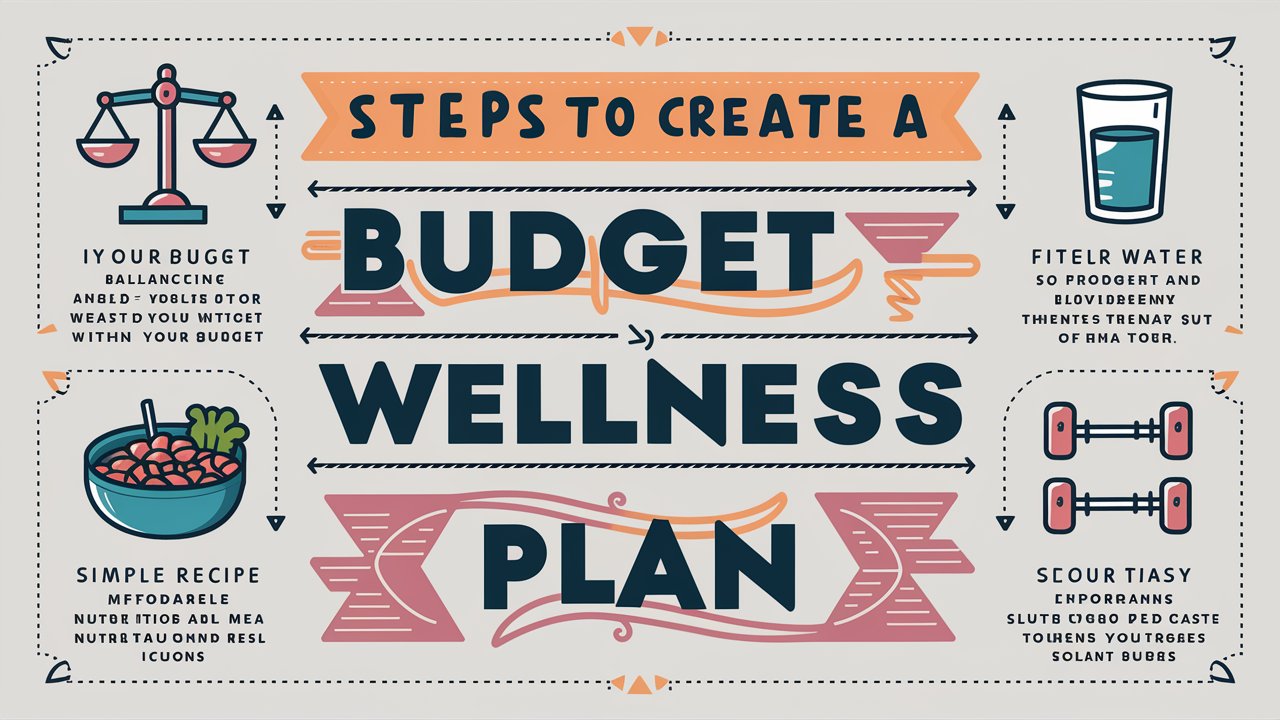Long-Term Goals: Building a Secure Financial Future 101
Long-Term Goals: Building a Secure Financial Future 101
Blog Article

Learn how to create a budget-friendly wellness plan with our comprehensive guide.
Creating a wellness plan(How to Make a Budget-Friendly Wellness Plan) that fits your budget can seem daunting, but it’s entirely possible with some careful planning and creativity. In this guide, we’ll explore various ways to maintain a healthy lifestyle without breaking the bank. From affordable fitness routines to cost-effective nutrition tips, you’ll find everything you need to embark on your wellness journey. Let’s dive into how to make a budget-friendly wellness plan that works for you.
Understanding the Importance of a Wellness Plan
A wellness plan (How to Make a Budget-Friendly Wellness Plan) is crucial for maintaining a balanced and healthy life. It encompasses physical, mental, and emotional health, ensuring that you are taking care of your overall well-being. A well-structured wellness plan can help you manage stress, improve your fitness, and boost your overall happiness. The key is to tailor the plan to your specific needs and budget.
Setting Realistic Wellness Goals
When creating your wellness plan(How to Make a Budget-Friendly Wellness Plan), start by setting realistic goals. It’s important to have a clear vision of what you want to achieve. Whether it’s losing weight, improving mental health, or increasing your fitness levels, having specific, measurable, achievable, relevant, and time-bound (SMART) goals will guide your efforts and keep you motivated.
Assessing Your Current Health and Wellness Status
Before you begin(How to Make a Budget-Friendly Wellness Plan), take stock of your current health and wellness status. This includes understanding your physical health, dietary habits, stress levels, and any existing medical conditions. You can do this through self-assessment tools, health apps, or by consulting with a healthcare professional. Knowing your starting point will help you create a plan that addresses your specific needs.
Finding Affordable Fitness Options
Home Workouts: One of the most budget-friendly ways to stay fit is by exercising at home. You don’t need expensive gym memberships or fancy equipment. There are countless free resources available online, including workout videos, fitness apps, and social media fitness challenges. Bodyweight exercises like push-ups, squats, and lunges are highly effective and require no equipment.
Outdoor Activities: Nature offers a free and refreshing way to get your daily dose of exercise. Walking, jogging, hiking, and cycling are excellent options. Parks and community centers often have free or low-cost fitness classes, outdoor gyms, and trails that you can utilize. Participating in local sports leagues or joining a community fitness group can also be a fun and affordable way to stay active.
Discounted Gym Memberships: If you prefer working out in a gym, look for discounts and deals. Many gyms offer off-peak memberships at reduced rates. Check for local community centers or nonprofit organizations that provide affordable access to fitness facilities. Some employers also offer gym membership discounts as part of their employee wellness programs.
Budget-Friendly Nutrition
Planning and Preparing Meals: Eating healthy doesn’t have to be expensive. Planning your meals in advance and preparing them at home can save you a lot of money. Create a weekly meal plan, make a shopping list, and stick to it. Batch cooking and using leftovers creatively can also click here reduce food waste and lower your grocery bills.
Buying in Bulk: Buying staple foods like grains, beans, and nuts in bulk can significantly cut costs. Look for bulk bins at your local grocery store or consider joining a wholesale club. These items have a long shelf life and can be used in a variety of meals, making them a cost-effective choice.
Seasonal and Local Produce: Fruits and vegetables that are in season are generally cheaper and fresher. Visit local farmers’ markets to find affordable and high-quality produce. Community-supported agriculture (CSA) programs are another great way to get fresh, local produce at a lower cost. click here Not only does this support local farmers, but it also reduces the carbon footprint associated with transporting food.
Reducing Food Waste: Being mindful of food waste is not only good for your wallet but also for the environment. Use up How to Make a Budget-Friendly Wellness Plan what you have before buying more, and get creative with leftovers. Store food properly to extend its shelf life and consider composting food scraps to reduce waste.